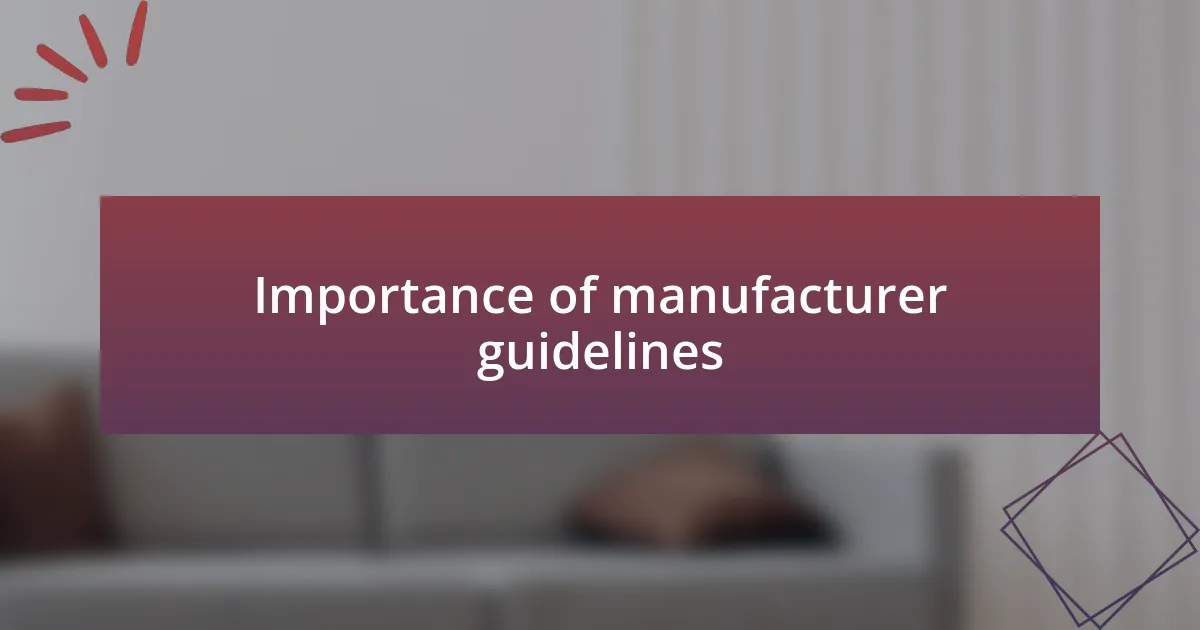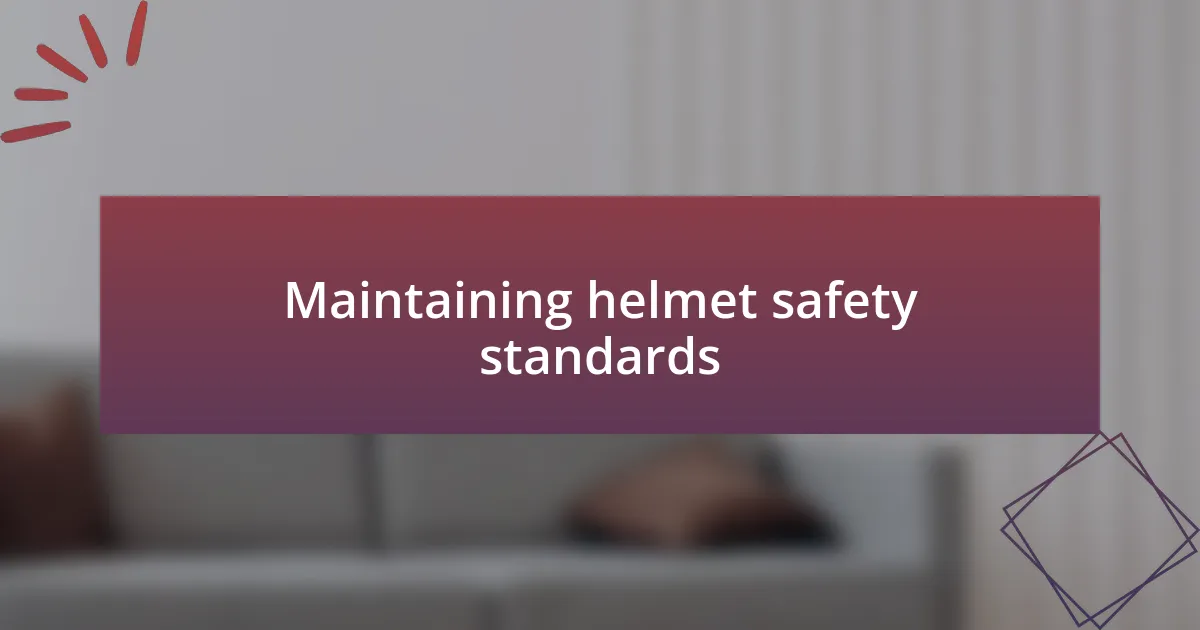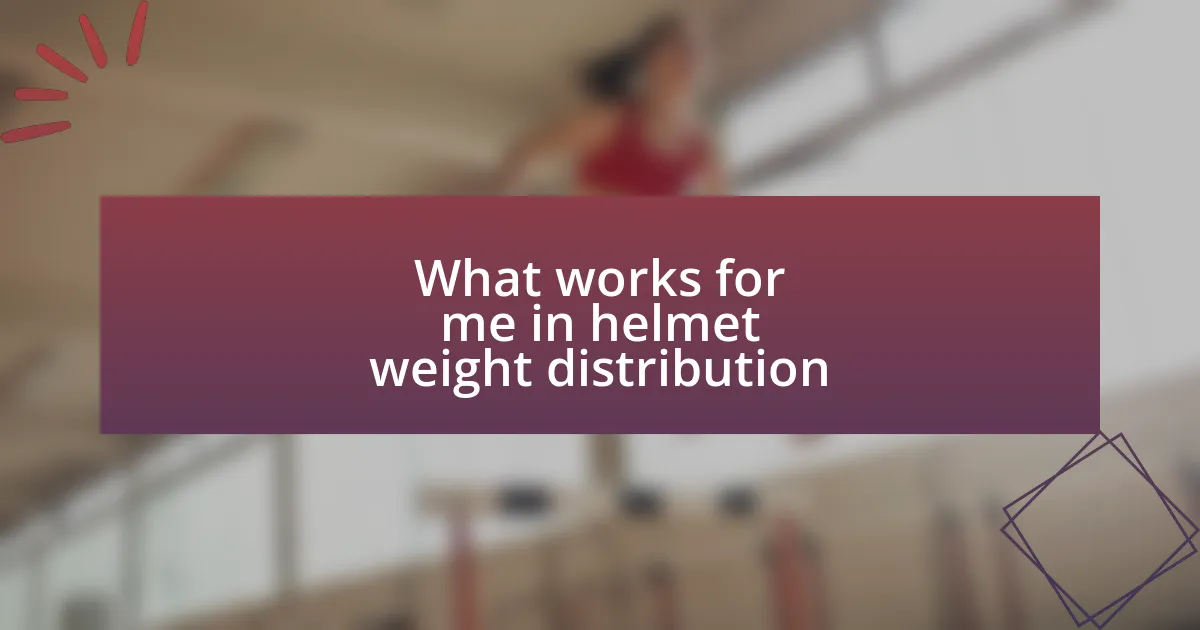Key takeaways:
- Helmet lifespan is affected by materials, care, and frequency of use; proper storage and maintenance are crucial for safety.
- Visible damage, compressed padding, and frayed straps are key indicators of helmet wear that should be regularly inspected.
- Manufacturers typically recommend replacing helmets every 3-5 years, regardless of apparent condition, to ensure continued protection.
- Making informed purchasing decisions focuses on safety features, fit, and comfort over design or price alone.

Understanding helmet lifespan factors
When it comes to helmet lifespan, several factors play a crucial role. For instance, the materials used in the construction of a helmet can significantly influence how long it can withstand impacts. I recall my own experience when I chose a helmet made from high-quality polycarbonate; it felt lighter and more durable, making me confident in its longevity.
Another aspect to consider is how the helmet is cared for. Did you know that exposure to heat, sunlight, and even harsh cleaning products can degrade the materials? I remember accidentally leaving my helmet in direct sunlight for days. It was a wake-up call when I learned that such neglect could compromise its safety, making it essential to store helmets properly and clean them with care.
Finally, the frequency of use also affects a helmet’s lifespan. I’ve seen friends who ride daily need to replace their helmets more often because wear and tear accumulate faster with regular wear. Have you thought about how your riding habits might be impacting your helmet? Understanding these factors helps us make better choices for our safety on the road.

Recognizing signs of helmet wear
Recognizing the signs of helmet wear is crucial for ensuring your safety. One of the most obvious indicators is any visible damage, such as cracks or dents. I remember the day I dropped my helmet during a ride—it made a loud thud. I knew then that I needed to inspect it carefully, as even small imperfections can compromise structural integrity.
Another sign to watch for is the padding inside the helmet. Over time, it can become compressed and lose its protective qualities. I often find myself checking the comfort level of my helmet after each ride. If it starts to feel loose or less snug, it’s a red flag. Helmets should fit properly to offer maximum protection, ensuring they mold comfortably to the shape of your head.
Lastly, keep an eye on the retention system, like the chin straps. Frayed or weakened straps can render the helmet less effective during impacts. A few months ago, a friend showed me his well-used helmet, and it was startling to see the worn-out straps. That moment reinforced my belief in consistently monitoring how my gear holds up, as neglecting these aspects can lead to serious consequences down the line.
| Sign of Wear | What to Look For |
|---|---|
| Visible Damage | Cracks, dents, or any deformation |
| Padded Interior | Compression or loss of snugness |
| Retention System | Fraying or weakened chin straps |

Importance of manufacturer guidelines
Manufacturer guidelines are essential when it comes to understanding how long a helmet should last and what conditions might affect its performance. Following these guidelines can mean the difference between a reliable helmet and one that could potentially fail during a critical moment. I recall once reading through a manufacturer’s booklet that came with my helmet and realizing the importance of not just the lifespan, but also factors like storage temperature and exposure to sunlight, which profoundly impact the integrity of the materials.
Here are some important points to consider regarding manufacturer guidelines:
– Lifespan Recommendations: Most manufacturers provide a specific timeline, often around 3-5 years for helmets, regardless of use.
– Maintenance Instructions: Guidelines often include cleaning and upkeep recommendations to preserve the helmet’s protective qualities.
– Impact Standards: Manufacturers might specify whether their helmets meet certain safety certifications, an important consideration when purchasing.
– Replacement Alerts: Some brands indicate signs that warrant a replacement even if the helmet hasn’t reached the expiration date.
– Storage Tips: Proper storage instructions can help prevent damage from environmental factors.
Reflecting on my own experiences, I can’t help but think of a time when I initially dismissed the 5-year replacement advice. After a week-long biking trip, I discovered that the helmet I had was well over its intended lifespan. It wasn’t until I talked to a fellow cyclist about safety that I fully grasped how each of those guidelines is rooted in real-world testing and research. It really does matter.

Recommended replacement timelines
When considering the recommended replacement timelines for helmets, it’s crucial to take the manufacturer’s advice to heart. Most manufacturers suggest replacing your helmet every 3 to 5 years, even if it appears to be in good condition. I remember the first time I heard this—I thought, how could a few scratches and some wear make that much of a difference? Yet, now I see how the materials can degrade over time, affecting their ability to protect us.
I once had a helmet that I used frequently for mountain biking. After two years, I noticed some wear on the interior cushioning, but I kept telling myself it still looked fine. During a rather intense ride, I crashed and my helmet took a significant hit. That moment taught me the hard way that ignoring those replacement recommendations can have serious consequences. It’s not just about the visible wear; it’s about the unseen deterioration that can occur over time.
Another aspect I’ve learned about replacement timelines is the importance of monitoring for visible signs of damage. After all, when was the last time you really looked closely at your helmet? I’m often surprised by how many friends I bike with who overlook issues like cracks or a loose chin strap. If you spot anything concerning, even if it’s a day before your helmet’s “expiration date,” it might be time to invest in a new one. Trust me, the peace of mind while riding is worth it.

Safe storage practices for helmets
Storing your helmet safely is often overlooked but incredibly important. I remember my early days of biking when I would toss my helmet in the back of my car without a second thought. It wasn’t until I noticed a stubborn dent that I realized that high temperatures or sudden impacts from other gear could compromise its integrity.
I’ve discovered that hanging my helmet on a designated hook at home not only protects it from damage but becomes a daily reminder to check its condition. I like to look at my helmet each time I grab my bike, examining it for any signs of wear. It’s a simple practice that keeps safety top of mind.
When you aren’t using your helmet, avoid placing it in direct sunlight or near heat sources. I learned this the hard way after leaving it in my car on a hot summer day, only to find the padding was significantly warped. Have you experienced something similar? I think it’s vital to treat your helmet with care; after all, it’s your first line of defense on those thrilling rides we all love.

Making informed purchasing decisions
When it comes to making informed purchasing decisions for a helmet, it’s crucial to prioritize safety features over flashy designs or brands. I once made the mistake of choosing a helmet based solely on its color, thinking it looked cool. Afterward, I learned about the importance of impact ratings and certification standards, which are essential for ensuring adequate protection. Knowing what to look for can save you from potential accidents.
Price can often be a deciding factor, but I believe it’s wise to view a helmet as an investment in your well-being. I remember spending slightly more for a helmet equipped with better ventilation and a snug fit. The comfort I felt during long rides was worth every extra dollar, and it encouraged me to wear it consistently. When you weigh these factors, you realize that sometimes spending a little more upfront can lead to greater safety and peace of mind in the long run.
Don’t forget to consider fit and proper sizing, as they directly affect how well a helmet performs. I recall a ride where I wore a helmet that was too loose, and the nagging feeling of uncertainty made me less confident on the trails. Make sure to try on helmets before purchasing, and look for options that include adjustable features. Ultimately, finding the right balance between safety, comfort, and style will ensure you make a decision that you won’t regret.

Maintaining helmet safety standards
Maintaining helmet safety standards requires a commitment to regular inspections and care. I’ve had moments where I nearly overlooked the wear and tear on my helmet, but then I realized how crucial those checks are for my safety. Does your helmet have any visible cracks or scratches? These can severely compromise its protective capabilities.
It’s essential to follow manufacturer guidelines for replacing your helmet after a certain number of years or after any impact. I once hesitated to replace a helmet that had been involved in a minor fall, thinking it still looked fine. That experience taught me—better safe than sorry. Trust me, the peace of mind that comes from knowing your gear is up to standard is irreplaceable.
Additionally, proper storage helps maintain helmet integrity. I recall leaving my helmet in the trunk of my car one hot summer day, only to realize how heat can weaken the materials over time. Simple habits, like avoiding extreme temperatures and using helmet bags, make a significant difference. How do you take care of your helmet? Consistent care and attention can extend its lifespan while ensuring your safety is never compromised.



